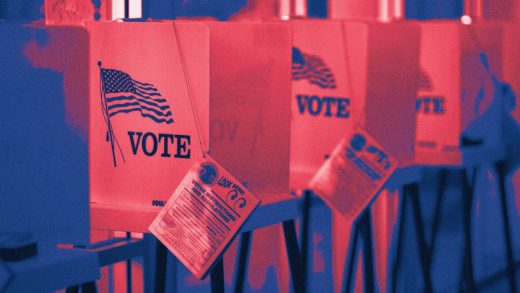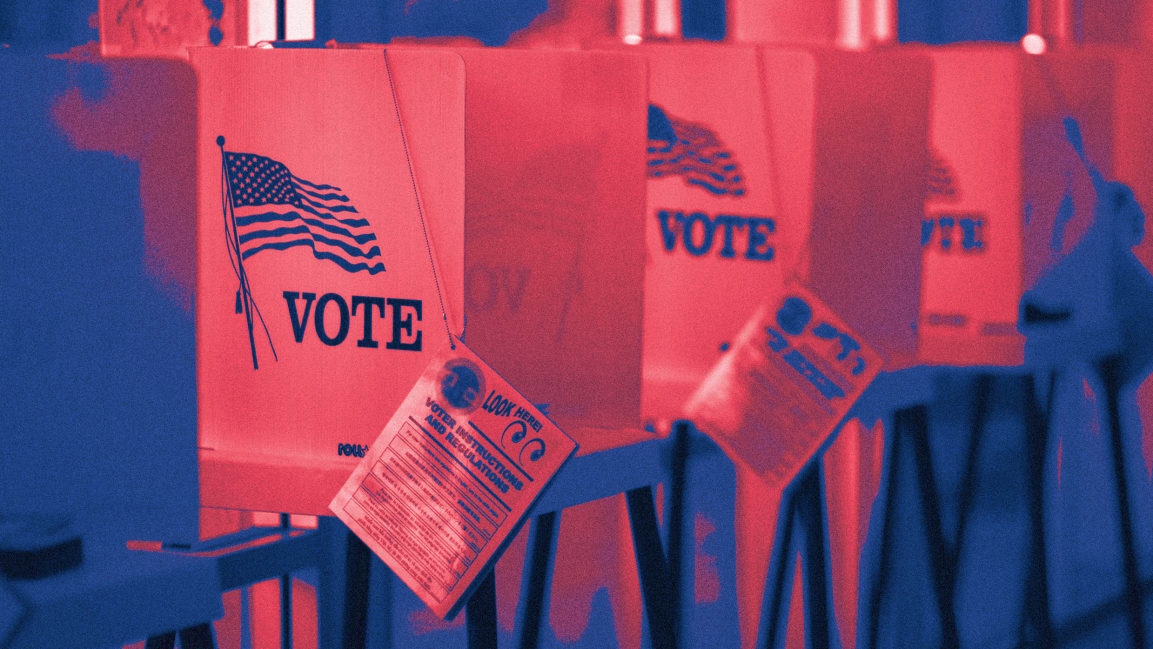Strict voter ID laws directly reduce minority turnout
In the past two decades, strict voter ID laws have popped up in states across the country in a supposed effort to prevent voter fraud. But civil liberty experts have long said that voter fraud is a fallacy. The real problem at our polls, they say, is one of low voter participation, and such laws only work to hurt that participation—especially among minorities. New research gives even more weight to that claim. Using official election data, a new study demonstrates the direct discriminatory impact of strict voter ID laws on racial and ethnic minority turnout. These laws, which require voters to show a specific form of photo identification at the polls, disproportionally drive down turnout in more racially diverse areas, the study shows, compared to whiter ones.
The study focuses on four states—Alabama, Mississippi, Virginia, and Wisconsin—that have implemented particularly draconian voter ID laws in the period between the 2012 and 2016 elections. Researchers looked at how turnout changed in those states’ counties in the two elections, comparing more racially diverse counties with whiter ones.
The researchers also compared the county data of those four states to that of demographically similar states that had not passed such laws, to find the relative drop in turnout and to mitigate the role of other factors that may have affected voter turnout. In order to do that, they used official aggregate turnout data for the two elections from all 3,142 counties in the U.S. and census data to help break each county down by racial and ethnic makeup.
The results showed a concrete effect on minority turnout. “Racial and ethnic minority turnout is dropping, relative to white turnout, more when these laws are passed than when not,” says Zoltan Hajnal, a professor of political science at the University of California, San Diego, and one of the study’s coauthors.
Voter turnout in counties with a 75% nonwhite population declined by 1.5% more in states that just adopted strict ID laws than in states that did not. While that’s not a staggering number, Hajnal emphasizes the principle: “Any relative decline in minority turnout is significant,” he says. “Any law that disproportionately burdens racial minorities is discriminatory.”
Even that small percentage has the ability to decide the outcome of a tight election, such as in 2016. Hajnal points specifically to Wisconsin, where the margin of victory for Trump was 0.77%, and which is likely to be a contentious swing state again in 2020. “It’s quite possible that that this could have been a deciding factor in an extremely tight election like Wisconsin,” he says.
The four laws chosen for this study were deemed the strictest by the researchers because they all require a photo ID on site with few exceptions. While the National Conference of State Legislatures deems Alabama’s less strict, because it allows the alternative for two election officials on site to vouch for a voter’s identity, Hajnal says that’s “a near impossibility for the most residents of the state.”
Voter ID laws are currently present in some form in 36 states. In 11 of those states, these laws are considered “strict” because they require an ID, not only request one. All of those strict laws have been passed since 2000. Many studies have already shown their disproportionate discrimination against minorities, as well as the elderly, poor, and disabled, because of the cost and travel involved for people to secure an ID (a 2014 Harvard Law School study found that some people in rural Texas have to travel 170 miles to reach the nearest ID office). A Brennan Center for Justice report highlighted that as many as 25% of Black voters do not have photo IDs, compared to 11% of all races combined.
The laws vary in stringency and how they’re written. In some cases, they’re written in a way that, in practice, ends up specifically discriminating against a certain ethnic group. North Dakota’s law requires an ID with a street address, which disenfranchises a huge number of Native Americans who live on reservations. North Carolina’s prohibits public assistance IDs and state employee ID cards, which are overwhelmingly used by Black voters.
All but one of the laws—Rhode Island is the exception—were crafted by Republican lawmakers, and in states with higher minority populations, under the guise of an effort to eliminate voter fraud. Yet such fraud has been found to be nearly nonexistent. It’s possible to infer the partisan advantage from this study, researchers say. “You put our results together with the fact that the overwhelming majority of racial and ethnic minorities vote Democratic, and the majority of whites vote Republican,” Hajnal says. “The likelihood is that this clearly advantages the Republican Party.”
Hajnal says that the discriminatory impacts are likely to repeat themselves in 2020, given that there are even more voter ID laws in place since 2016 (although the Virginia law has now been repealed by the state’s new Democratic legislature). With the pandemic also forcing some ID offices closed—or allowing officials another excuse to suppress voters—Hajnal guesses that “voter ID laws and other voter suppression methods could quite conceivably impact the outcome of the election.”
He doesn’t hold out hope that the courts will intervene to remedy the injustice anytime soon, either. “I’m pretty pessimistic,” he says. “I don’t foresee anything in the near term that is going to change the prevalence of these laws, unfortunately.”
(27)



